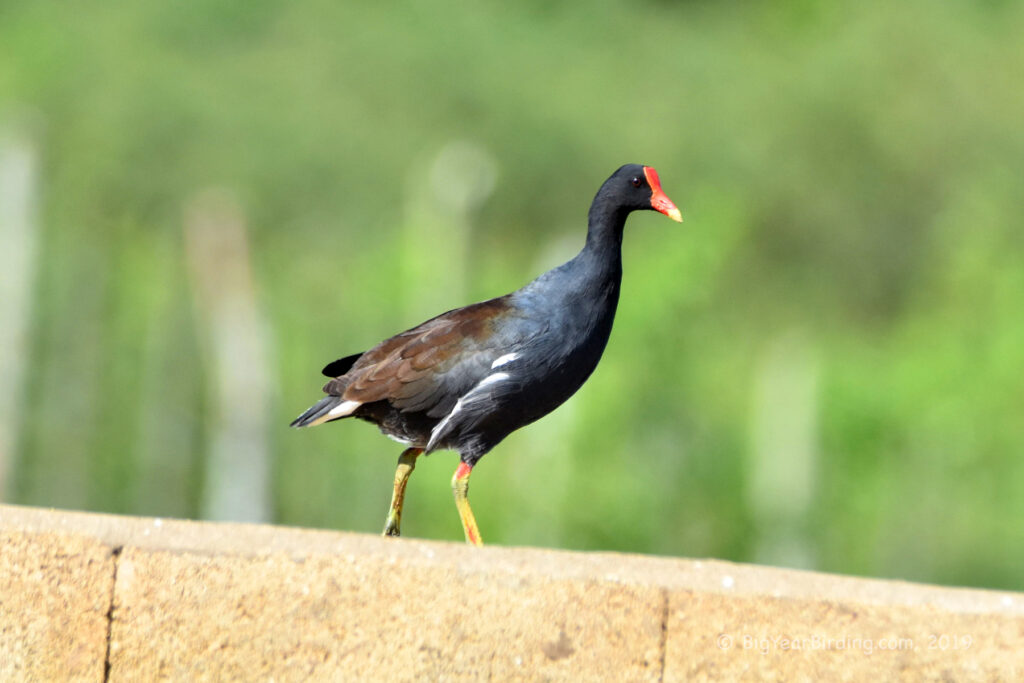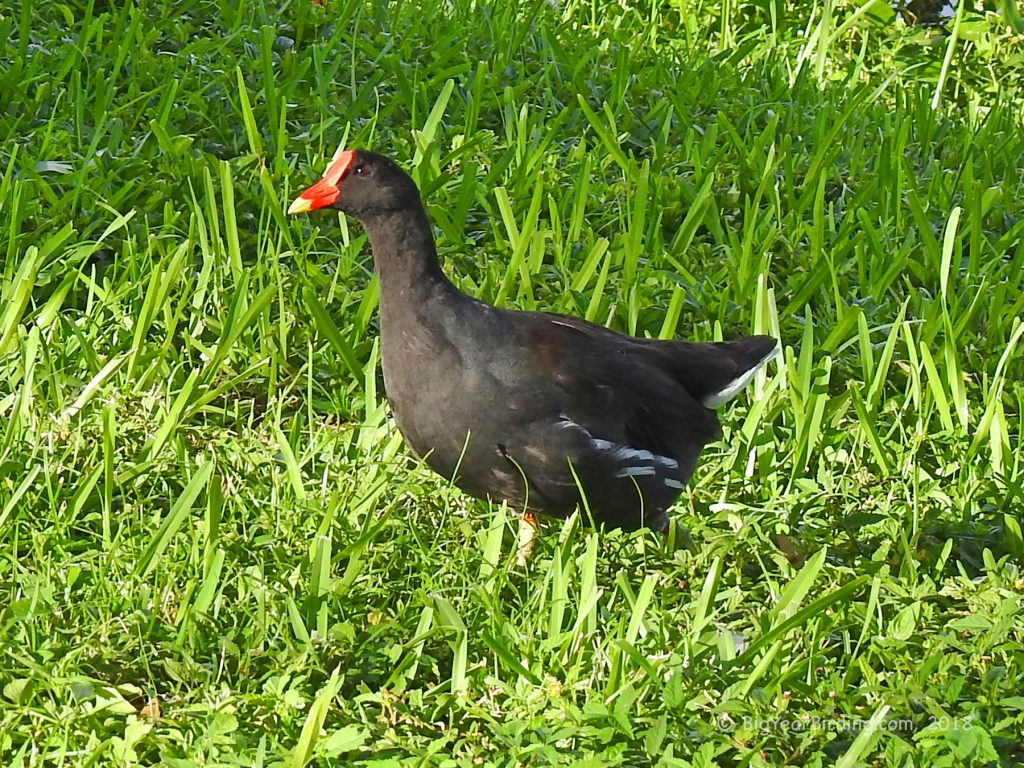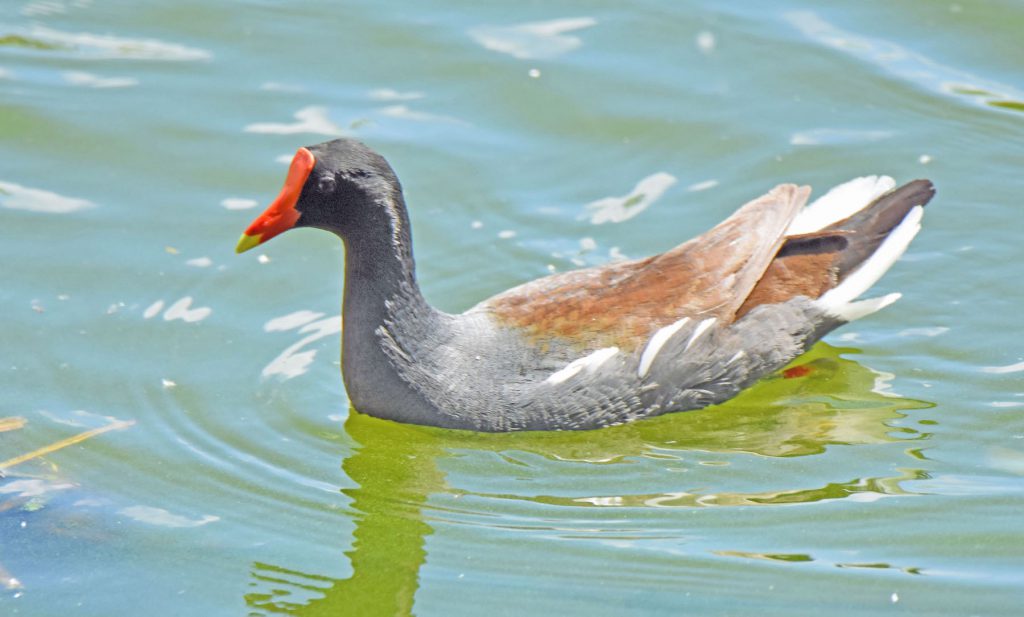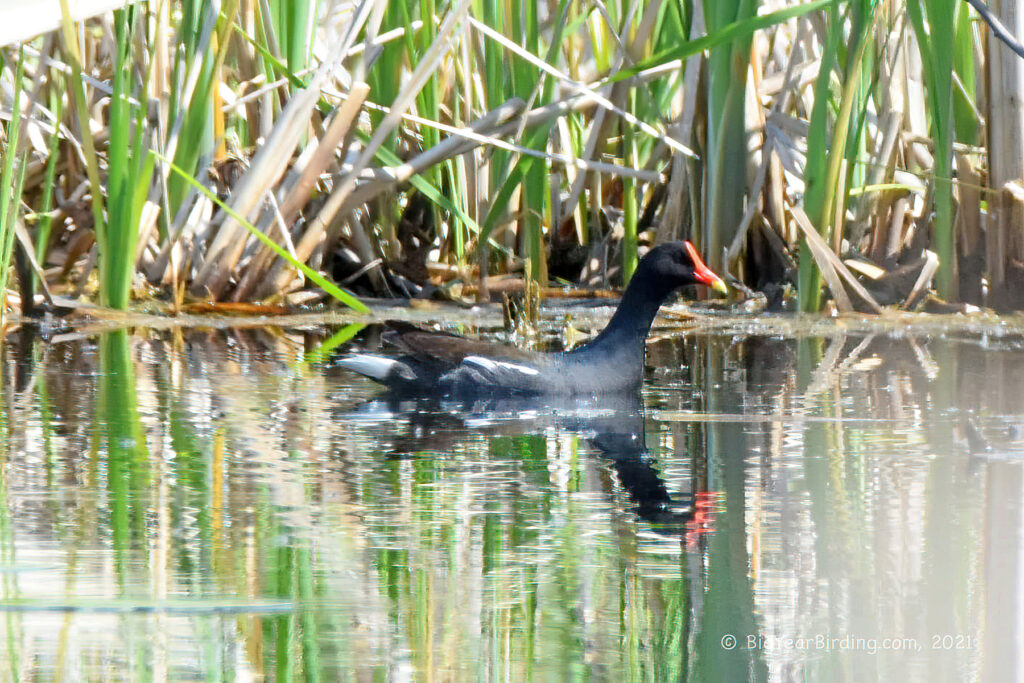
The common gallinule (Gallinula galeata) is a medium-sized bird that belongs to the family Rallidae. This bird is commonly found in wetlands, ponds, marshes, and other freshwater habitats in North and South America. The adult common gallinule has a length of around 12 to 15 inches and weighs between 8 to 17 ounces.

One of the most distinguishing field marks of the common gallinule is its bright red bill and frontal shield. The bill is long, slender, and slightly curved, while the frontal shield is enlarged, extending up to the base of the bill. The bird’s body is dark gray or brown with a lighter gray underbelly, and it has a distinctive white patch on its flank. Its legs are long and bright yellow.

The common gallinule is a non-migratory bird, which means that it stays in the same area all year round. However, some populations may undertake short distance movements during the non-breeding season to find suitable wetland habitats. These birds are also known to be adaptable to human-modified habitats, such as agricultural fields and urban ponds.
The common gallinule is an omnivorous bird that feeds on a variety of aquatic vegetation, insects, snails, and small fish. It is known for its habit of walking on floating vegetation and foraging in the shallow water. The bird is also a skilled swimmer and diver, using its wings to propel itself underwater.

During the breeding season, the common gallinule builds a floating nest made of plant material and anchored to emergent vegetation. The female lays around 7 to 10 eggs, which are incubated by both parents for around 19 to 23 days. The chicks are precocial and can swim and feed themselves shortly after hatching. The common gallinule is a fascinating bird to observe in the wild, and its adaptability to different habitats makes it a common sight in many wetland areas.

